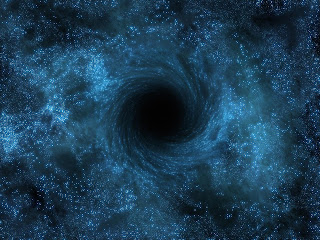Since the date that Galileo
pointed his telescope to the sky and observed that Earth’s moon has mountain
and crater, telescope has been evolved so much and allows us to see much more
than Galileo would have never dreamed of. Since the time that Newton’s
invention that using of reflective mirror than refractive lenses, the evolution
of optical telescope has been essentially on figuring out how to make bigger
reflective mirror.
The use of segmented mirrors,
thanks to Jerry Nelson, twentieth century is a period of extreme large telescopes
that allows us to make many breakthrough discoveries. The Kecks twin telescopes were
built using segment of mirrors with one of the largest aperture size of today. However,
with our eager to see more into the universe, to see more about our origin, to
search for our outer companions, the scale and size of current telescopes are
outgrown by our ambition.
At the end of this decade,
we will witness the birth of very extreme large telescopes with more than double
the size of the world largest telescope now. At least three extreme large
telescopes, the Giant Magellan Telescope with 24.5 meters, the Thirty Meter
Telescope, and the 42 European Extremely Large Telescope will be completed at
about the end of this decade.
The Thirty Meter Telescope (TMT),
based on the success of the Keck telescopes, will be one of the super large
telescopes that will be operational in 2018. The TMT will join the Keck telescopes
on Mount Mauna Kea, Hawaii. TMT will be the most advance ground based optical,
mid-infrared and near infrared telescope.
As the name suggests, TMT will have a 30 meters primary
mirrors, form from an array of 492 individual, 1.45 meters (4.75 foot) segments.
The TMT will be equipped with an altitude-azimuth mount, capable of reposition
the telescope within 5 minutes and with a precision of 0.2 arcseconds. The
total mass of the TMT will reach close to 2000 tons. The TMT observatory is
managed by the partnership between the Association
of Canadian Universities for Research in Astronomy (ACURA), the California Institute
of Technology and the University of California.
With an area of 9 times the Keck
telescopes, the TMT will be able to see much fainter objects, reach further and
see more clearly up to 100 times compared to current telescopes. The TMT will
be equipped with the most advance envision instruments such as NFIRAOS (Narrow
Field Infrared Adaptive Optics System), IRIS (Infrared Imaging Spectrometer), IRMS
(Infrared Multi-slit Spectrometer), and WFOS (Wide-Field Optical Spectrometer).
The TMT an take images with the resolution of 12 times the images that the Hubble
can do. TMT will bring Earth-like
exoplanet search to a new level as it will enable astronomers to look at the distant
corners of the universe. For years, we are only able to detect and study
exoplanets base on their parent stars. TMT will be able to collect direct light
from these planets and enable astronomers to study their characterization, composition
and dynamics at great details.
TMT will be able to detect the some
of the faintest and youngest galaxies through their Lyman alpha emission,
thanks to the NFIRAOS adaptive system and IRIS (Infrared Imaging system). Astronomers
will be able to scale Lyman alpha galaxies and study the evolution of
ionization.
Being able to look farther at
greater distance, TMT will allow astronomers to look back further back in time
and understand the universe shortly after the Big Bang. Astronomers will be
able to the formation of large structures that shape the universe about 200
millions years after the Big Bang.
Directly observing distant galaxies and intergalactic medium will enable
astronomer to understand the composition of the early universe and even the
dark matter and dark energy.
Being able to collect light from
some of the earliest large structure of the universe, TMT will enable
astronomers to have a deeper look into the central black holes, investigate
their formation and compositions and the relativistic effect at the center of
the Galaxies.
TMT will help astronomers study and
explore young galaxies and other structures at the age when these galaxies were
assembled and the heavy elements formations. With the help of TMT, astronomers
will be able take a closer look at the early star formations, which is
different today because of lack of heavy elements in the early days.
Just as the universe is full of mysterious
wonders, the Thirty Meter Telescope itself is a marvelous piece of equipment
that will allow mankind to make a giant leap in understanding our origin and
the whole universe that we reside in.
References and images from:
-
Thirty Meter
Telescope, Detailed Science Case: 2007
-
en.wikipedia.org/wiki/Thirty_Meter_Telescope
-
www.wired.com/wiredscience/2009/11/thirty-meter-telescope/
-
www.wired.com/wiredscience/2007/12/200-million-gra/
-
www.tmt.org/fast-facts-for-astronomers
-
www.wired.com/wiredscience/2008/10/in-the-late-197/
-
www.tmt.org/science-case

.jpg)

